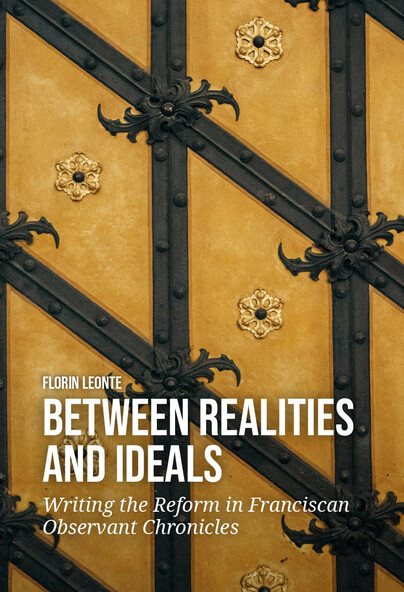Between Realities and Ideals (Paperback)
Writing the Reform in Franciscan Observant Chronicles
Imprint: Sidestone Press
Pages: 140
ISBN: 9789464263794
Published: 15th October 2025
Script Academic & Professional
Pages: 140
ISBN: 9789464263794
Published: 15th October 2025
Script Academic & Professional
You'll be £20.00 closer to your next £10.00 credit when you purchase Between Realities and Ideals. What's this?
+£4.99 UK Delivery or free UK delivery if order is over £40
(click here for international delivery rates)
Need a currency converter? Check XE.com for live rates
(click here for international delivery rates)
Need a currency converter? Check XE.com for live rates
This study examines the discourse of reform within the Franciscan Observant movement through an analysis of two late medieval chronicles: Nicolaus Glassberger’s Chronica ordinis minorum observantum and Bernardino Aquilano’s Chronica fratrum minorum observantiae. It argues that these chronicles served not only as historical records but as strategic tools for legitimizing the Observants’ identity, promoting their spiritual ideals, and dealing with the socio-political landscapes of the fifteenth century. The Observants, advocating a return to Franciscan poverty and humility, positioned themselves as reformers against the perceived laxity of Conventual Franciscans, deploying narratives to assert continuity with St. Francis while adapting to late medieval challenges.
The analysis sheds light on the chroniclers’ strategies of combining moral virtues, stories of institutional growth, and political engagement. Glassberger’s comprehensive account emphasizes papal endorsements, miraculous events, and trans-regional expansion, reflecting efforts toalign Observant reforms with broader ecclesiastical authority. Aquilano’s focus on Italian contexts underscores conflicts with Conventuals, the role of education, and the integration of humanist influences, illustrating tensions between ascetic ideals and pastoral pragmatism. Both authors employ biographies, miracle stories, and conflict narratives to model Observant virtues, legitimize their movement, and criticize rivals.
The study shows the Observants’ nuanced negotiation of spiritual ideals and institutional realities. Chronicles functioned as internal pedagogical tools that engendered communal identity through exemplary figures like Bernardino of Siena and John Capistrano, while addressing external threats such as the Ottoman advance and internal schisms. Furthermore, by reproducing papal decrees, episodes of missionary endeavors, and dialogues with secular authorities, the texts reinforced the Observants’ role as moral and political mediators. Ultimately, the chronicles exemplify how Observants balanced tradition and adaptation, using historical narrative to secure their place within an evolving Church and society. They shaped a reformist identity rooted in continuity, moral rigor, and calculated engagement with late medieval intellectual and political currents.
Other titles in Sidestone Press...















